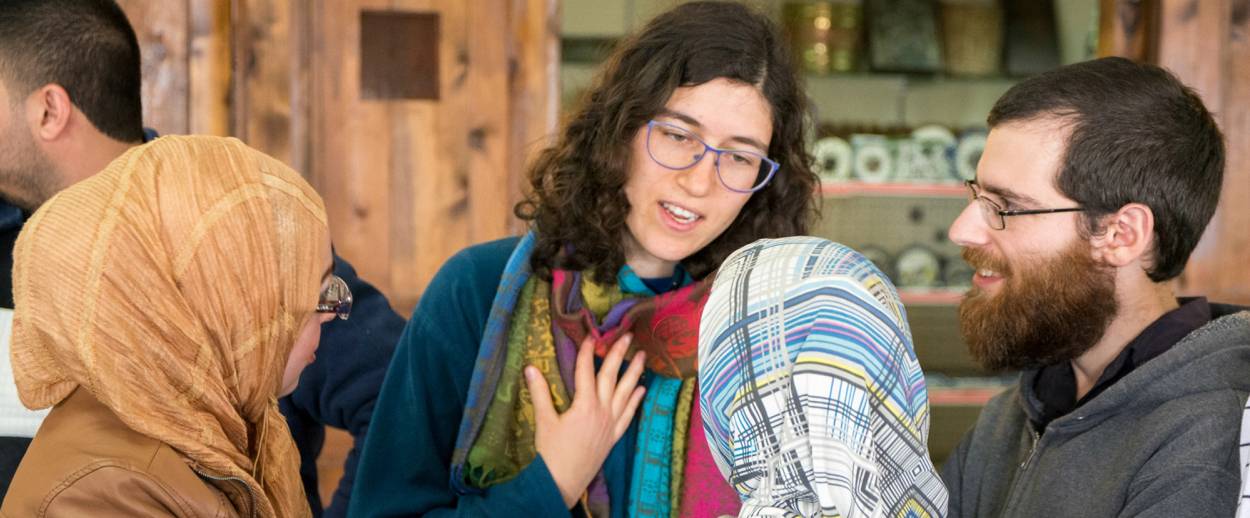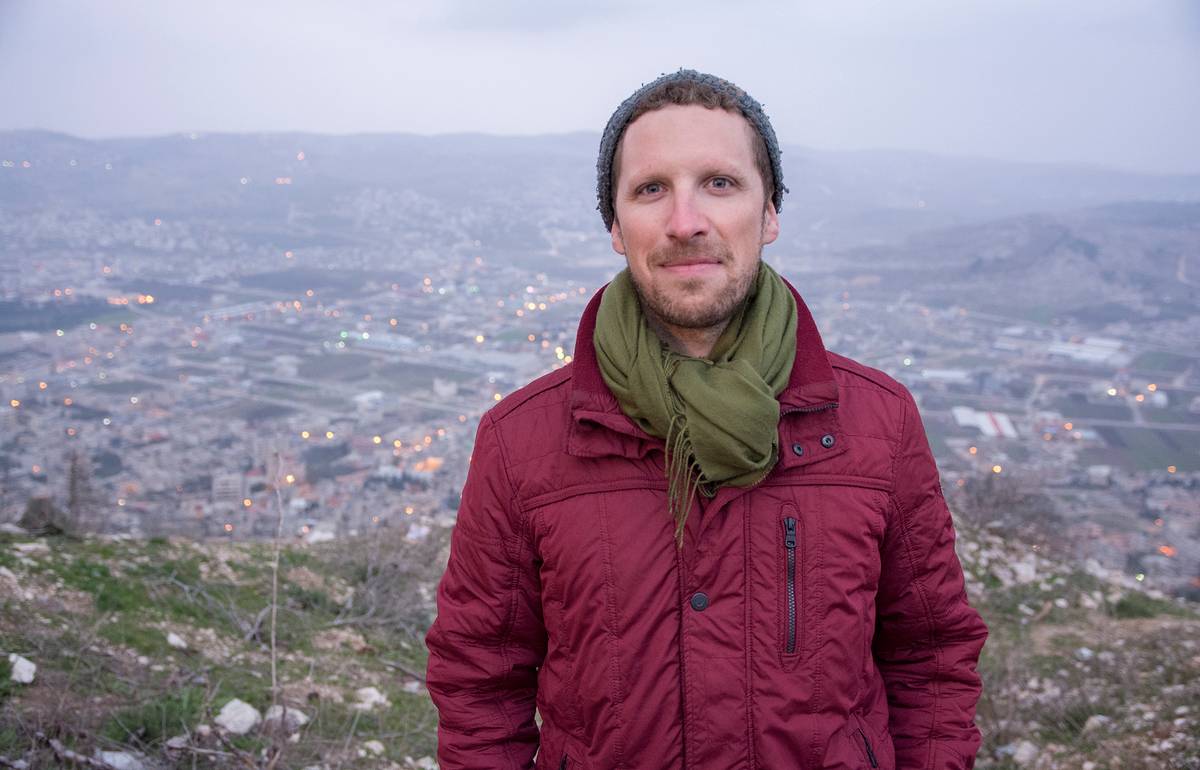Israelis and Palestinians Learn Each Other’s History on the Ground
Tiyul-Rihla, a grassroots educational initiative, is bringing together historically clashing neighbors




BETHLEHEM — As the bus approached Aaida Refugee Camp, Amichai Korda remembered the last time he was there. It was 2003, and Korda, a combat soldier in the 931st infantry battalion of the Nahal Brigade, had just finished medic’s training. The Second Intifada was in full swing, and the soldiers were called from Bethlehem to treat a female border policemen who had been pummeled with stones by Palestinians near the entrance to the camp.
“It was complete chaos,” he recalled. “When she was wounded, the soldiers began shooting in the air, and we thought [the Palestinians] were shooting at us.”
The bus inched along the concrete security barrier separating Bethlehem from the outskirts of Jerusalem, arriving at a large gateway adorned with a massive sculpture of a key, symbolizing the yearning of Palestinian refugees to return to their original homes. “I always thought it would be scary to come back here without my weapon and the armored jeep, but it’s not so scary. Times have changed,” he said.
Korda, 33, was visiting Bethlehem on a tour organized by Tiyul-Rihla, a grassroots educational initiative that brings together Israelis and Palestinians for a two-day excursion where they can learn about each other’s historic narratives. The trips, which take place every few months, alternate between Israel and the West Bank. This trip began in Samaria, where the group of 50 visited the ancient Israelite city of Sebastia and the small Samaritan community overlooking Nablus. After an overnight stay in the Christian town of Beit Jala, south of Jerusalem, participants toured the Church of the Nativity in downtown Bethlehem and cautiously ventured into Aaida Refugee Camp.

Since the first trip to Yad Vashem and the al-Aqsa Mosque in September 2011, Tiyul-Rihla has organized 18 trips with over 700 participants. The organizers make a point of visiting Jewish and Muslim historic sites and discussing history “where it happened.”
“The average Jewish-Israeli Zionist doesn’t really understand Palestinian national identity. We have many misconceptions, as do Palestinians about us: they don’t view Judaism or Zionism as we do,” said Yovav Kalifon, co-founder of Tiyul-Rihla. Kalifon believes that Israelis and Palestinians form their political opinions on the basis of their view of history and national identity, issues he seeks to delve into during the two-day trips. “We discuss meaningful things that go beyond day-to-day politics,” he said.
The bureaucracy of conflict doesn’t make it easy for Israelis and Palestinians to visit each other’s territories. The IDF usually comes through with permits for the Israeli participants to enter area A (areas under full Palestinian control) only just before the visit. The army OK to enter Bethlehem arrived late the night before, as participants sat at a Beit Jala restaurant smoking hookahs and drinking Taybeh beer. Permits allowing Palestinians to enter Israel are similarly issued at the last second, causing many Palestinians to make other plans.
“We’re not a high priority for the overworked army authorities,” Kalifon explains.
Danny Orbach, a military history lecturer at Jerusalem’s Hebrew University, said that having visited many Arab and Muslim countries, he felt strange not to have toured the West Bank, right next door. “It was like the forbidden land,” he said, walking toward the Church of the Nativity in Bethlehem. “When I heard there was a tour to the Nablus area in the northern West Bank I knew this was an opportunity of a lifetime.”
Meeting Palestinians abroad, Orbach said, felt completely different than accompanying them on a trip through their homeland. “When you’re abroad, there are no power relations; everybody’s equal,” he explained. “But here all the power relations of the Israeli-Palestinian conflict come into play. Israel is the more powerful side in the conflict, but when you visit area A as an Israeli, you are under Palestinian supervision and protection.”
Orbach was always drawn to places of enmity and tension. As a high school student, he went on a student exchange in Germany, which he said fascinated him more than any other student exchange. “People don’t readily change their opinions, especially not in front of “the other.” But I feel that when people speak to each other in these circumstances, there may be long-term, subtle changes. I think that’s the greatest benefit of such trips.”
The willingness of Israelis like Orbach to leave their comfort zone is not lost on the Palestinian participants. Walking through the alleyways of Aaida Refugee Camp, portraits of prisoners and martyrs decorating the walls, Daoud Amer, 24, said he had great appreciation for Israelis who decided to see how Palestinian refugees live with their own eyes. “This is a huge step for Israelis, and I have the deepest respect for them,” Amer said.
Born and raised in the West Bank village of Mesha, just across the Green Line from the Israeli city of Rosh Haayin, Amer never visited Israel before. He was only six when the Second Intifada erupted in the year 2000, and his village was closed off to the hordes of Israelis who would come for shopping on weekends. “I don’t really remember those days,” he says. “But my family says it was a wonderful life.”
Elhanan Miller (@ElhananMiller) is a Jerusalem-based reporter specializing in the Arab world.